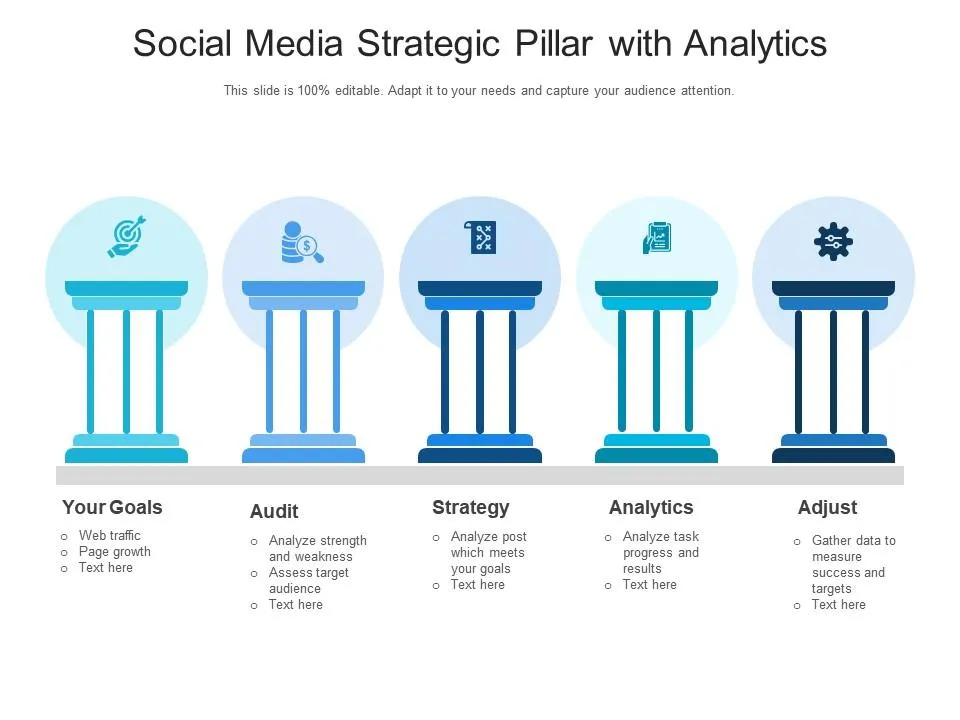Our common goal is to take your social media presence to the next level with strategic fundamentals. To do this, we give you the basics of social media strategy as a set of tactics to achieve the set goal: The effective management of social media content that engages users and contributes to the achievement of your business goals.
Why? Because users’ demand for informative, well-researched, and professionally prepared content has never been higher. It’s no longer enough to simply copy content from one medium to another. What is needed is channel-specific relevant content that addresses the needs of the target group and provides them with answers to their questions and solutions to their problems. To achieve this, content production needs to be strategically aligned.
Why do people use social networks?
In an exploratory study on the theory of uses and gratifications applied to social networks, it was found that users use these platforms for nine main reasons:
- Social interaction: to establish contact (albeit virtual) with family and friends
- Information search: this includes information about products, offers, events, skills they want to learn, and businesses
- Passing the time: it was also reported that users use the networks when they have nothing else to do
- Entertainment: a need was expressed for humorous content and games via social networks
- Relaxation: as an escape from reality and an opportunity to leave behind the stresses of everyday life
- Expression of opinions: a desire to interact through likes, comments, and status updates to express or support a point of view
- Communication utility: the convenience of being able to communicate with several people in an immediate way, and even almost at the same time
- Information sharing: this use responds to the need to access information. Unlike other media, networks are interactive, and this allows other users to establish a bidirectional communication by sharing something
- Monitoring others: to be aware of what is going on with other people, to know what they are doing (how many times have we not stalked someone’s profile out of curiosity?)
This is an overview of what people are looking for when they connect to a social network. While creating content, think about what needs your brand respond to, and what makes sense for your personality and message.

What do you need to say about your brand?
But there are also your brand-level communication needs. Things like your message and mission, but also practical information like the products you offer, their prices, contact forms, payment methods, opening hours, and various news.
This is where we start to realize where the intersections are between the expectations of a group of people with similar characteristics (your audience), and the communication and commercial needs of your brand.
How do you match the two?
What are the content pillars?
Social media content pillars are those lines of publication that we are going to offer to our audience on social networks and that depends largely on the objectives we set out in the overall content marketing strategy, taking into account the function of the social network to be used and under which communication approach these types of content are going to be offered.
They are especially useful for inspiration when you are not sure what to publish or share. Content pillars should address the needs and values of your business and those of your target audience. The more relevant your content is to your audience, the more likely it will resonate with them and build trust over time.

Key benefits of the pillar content
- Pillar content as a planning aid
The fixed structure of blog articles makes it much easier to plan and write content. Once the main topics have been defined, you can feed them with articles in turn. Topics are found more quickly and content builds on each other in a meaningful way.
- Pillar content as a customer persuader
A well-structured blog is not only easier to maintain for the person responsible for the website, but it also leaves a good impression on the customer. Because the cluster structure helps them find their way around more quickly and thus saves time. After all, customers on the Web are impatient and want to find the right information with just a few clicks. The constant expansion of a company-relevant topic puts you as an expert in the spotlight — and thus gives you a clear competitive advantage.
- Pillar content in SEO strategy
The changing search algorithms that Google works with are also reflected in the way companies need to respond. At the beginning of the SEO era, the focus was still on a single keyword. So a lamp retailer only had to drop the main keyword “lamp” and secondary keywords like “floor lamp,” “table lamp,” etc. often enough to rank at the top. The result was completely unreadable texts that completely neglected the customer. Today, it’s different: put simply, Google recognizes connections and sees when a topic is covered in depth. Thus, the search engine classifies you as an expert and places you at the top of the results. So for blog writers, this means Keywords yes – but always create posts for the customer, not directly for Google.
The core issues of a social media strategy
A comprehensive social media marketing strategy is very multifaceted and varies from company to company in its characteristics. It ranges from discussions about how to address the target audience, to design guidelines, to community management. In this article, however, we will focus on the foundation on which your strategy stands. While creating social media content pillars, ask the following questions:
- What do I want to achieve with social media?
- Who do I want to target with my content?
- What types of content will I definitely use?
- On which platforms and through which specific content do I want to communicate?
- How does the content production process work?
These questions stand for the following five basic pillars that support a social media marketing strategy and help create content ideas, let’s have a look.
Get 7 days free trial access to all tools.
No credit card needed!

Pillars of social media content
Here are the basic social media content pillars:
1. Educational Content
This is truly the MOST critical content pillar for success. The only way to show someone that you are an expert is to expose your brilliance on the subject.
With educational content, you can teach your audience how to do what they want to do, and instruct them to do some tasks through guides, a step-by-step, or a “How to’s”. Obviously, if you are going to offer educational content you have to research through surveys which topics your target audience needs to solve.
For example: if you are a photographer and you can’t explain the best angles for selfies or what brand poses attract customers, why would I hire you, or even… Why would I follow you? Value-driven content is the MOST ESSENTIAL thing to build an audience.
So to create educational content:
- Share your knowledge and expertise
- Show that you are an expert in your niche
- Simplify a process
- Give people a reason to follow you
- Help them learn what you know
2. Entertainment Content
It is all content that serves to entertain the audience, making them feel a pleasant and fun experience. The content can range from a video to storytelling. In general, the content created in this pillar is usually humorous, such as memes, but it can also be videos that call for reflection and evoke nostalgia. Content ideas also could be contests, sweepstakes, and giveaways. This type of content invites the user to interact and share, to the point that it can become viral.
- Ask your audience questions
- Tell them a funny story
- Present funny videos for them to watch
3. Connecting Content
There is something that no other business has, and they couldn’t even if they tried or spent millions of dollars… It’s you! You are the special sauce, the factor that makes your business unique and enjoyable.
These publications are designed to get people to interact and see you as a real brand with a real personality. They bring a burst of life to your business.
These are social media posts that are meant to get people to engage with your brand: customers and other businesses that they will enjoy or can interact with directly.
This is great for helping to increase your visibility through the social media algorithm AND it’s great for your brand relationships.
- Introduce yourself, your team, and your story
- Show what’s behind the scenes
- Build relationships with your audience and create connections
- Share your “Why”
4. Inspirational Content
You need to create content that inspires your audience and engages them. Showcase your brand values and make connections with your community.
- Be encouraging
- Share your favorite quote
- Let your audience know how grateful you are for them
- Tell them about the journey you took to get to where you are today
5. Promotional Content
Last, and certainly not least, you have to promote what you’re offering! Entrepreneurs get caught up in not wanting to be pushy or feel like a salesperson. If no one knows what you’re selling, they can’t buy from you.
You created your business for a reason. There is a need for your products or services. Your dream customers exist and they want to find you.
Promotional content is used to promote your brand and learn more about it, highlighting the virtues of the company and its competitive advantage over others. This type of content in brand’s social media channels tries to show and/or sell the benefits and goodness of your product or service.
Help them by explaining what problem you will solve and what you are offering!
- Show the benefits of your product/service
- Explain your offer
- Use clear calls to action
- Show the benefits of your product/service
- Explain your offer
- Use clear calls to action

The content lifecycle
What’s your perspective on content production? Do you see it as a one-way street whose end is reached with the publication, or as a cycle with no beginning and no end? After content is published, it’s far from over – even with social media content. From idea generation to measuring success, content goes through multiple processes that all intertwine.
Once a few ideas have been generated, they need to be prioritized and assessed in terms of effort. Hand in hand with this, you plan the individual contributions in the course of your editorial planning. The planned formats go into production and are prepared for specific target groups and channels. Don’t forget at this point that your content should have a recognition value. A consistent visual language and color scheme, coordinated with the corporate colors, will help. When it comes to publishing content, tools like Hootsuite can also make your life easier with the ability to schedule posts in advance and create a social media content calendar.
Social media platforms also have a lot to do with testing. Social media marketers try to find out what days and times the community is most active and provide them with content at the right time. To get the content out there, it’s also worth spending a little budget to increase the reach of your content. Try it out and start with a budget of 5 to 10 euros per post, for example. Collaborations with other Facebook pages, for example, are also helpful to spread your content on the social media platform.
Last but not least, it is absolutely essential that you measure success! This is the only way to find out which content works well and what you can do without in the future. It will help you and your team to gradually tailor the content even better to the needs of your target audience. When defining metrics to measure your success, it is important that they are always related to your content marketing goal. However, it’s not enough to define metrics. The results also need to be presented clearly in reports and discussed regularly in meetings.
You now know the most important content pillars of a social media marketing strategy and can assess whether your social media presence has a solid foundation.
A few more tips on writing blog posts:
- Create content that supports your expertise
- Write in a structured way and use subheadings marked with h2, h3, etc.
- Use bulleted lists in longer blogposts to break up the structure
- Don’t write just to have something written. Create meaningful content. Each article should provide value to the reader
- Don’t just focus on a topic because your SEO research spit out the keyword, but always put the user in focus
- Do not write wildly, but make yourself a structure or an editorial plan in advance. It’s faster than you think. Does it all sound a bit much now? Don’t worry, it’s not. Giving your company blog a structure is always a good idea. This makes your work easier and the reader’s navigation on the page easier. Once the structure is defined, the rest will go by itself. You may even have an old blog post already written that you just need to assign to the new Pillar page. Whether from an SEO or a customer perspective, tidy Pillar content gives your blog new clout.
Conclusion
When you strategically create content pillars in your social media marketing strategy, it will help you stay organized, consistent and on-brand. With patience and time, social media content pillars help elevate your marketing strategy and ultimately help grow your business.




